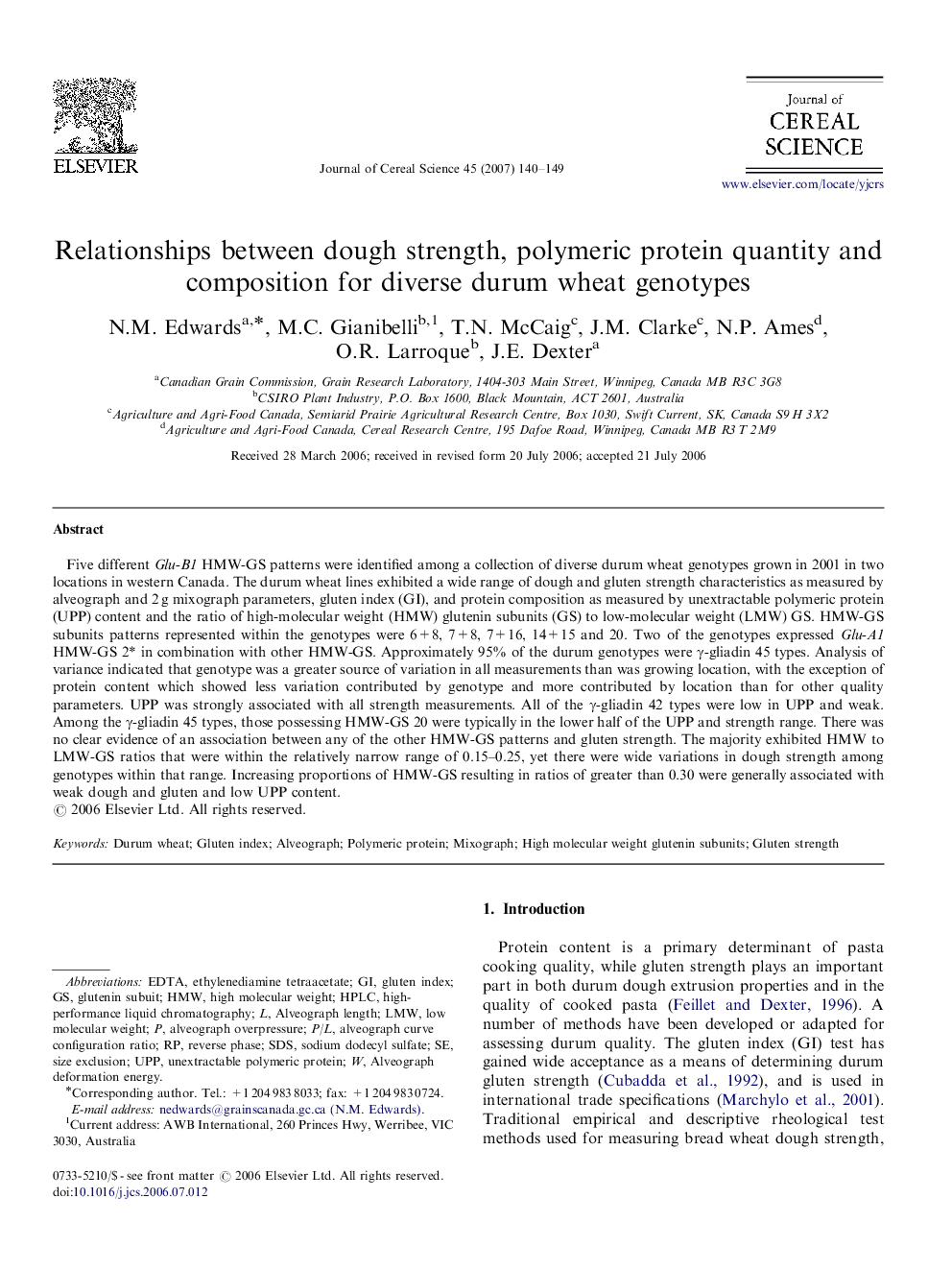| Article ID | Journal | Published Year | Pages | File Type |
|---|---|---|---|---|
| 4516615 | Journal of Cereal Science | 2007 | 10 Pages |
Five different Glu-B1 HMW-GS patterns were identified among a collection of diverse durum wheat genotypes grown in 2001 in two locations in western Canada. The durum wheat lines exhibited a wide range of dough and gluten strength characteristics as measured by alveograph and 2 g mixograph parameters, gluten index (GI), and protein composition as measured by unextractable polymeric protein (UPP) content and the ratio of high-molecular weight (HMW) glutenin subunits (GS) to low-molecular weight (LMW) GS. HMW-GS subunits patterns represented within the genotypes were 6+8, 7+8, 7+16, 14+15 and 20. Two of the genotypes expressed Glu-A1 HMW-GS 2* in combination with other HMW-GS. Approximately 95% of the durum genotypes were γ-gliadin 45 types. Analysis of variance indicated that genotype was a greater source of variation in all measurements than was growing location, with the exception of protein content which showed less variation contributed by genotype and more contributed by location than for other quality parameters. UPP was strongly associated with all strength measurements. All of the γ-gliadin 42 types were low in UPP and weak. Among the γ-gliadin 45 types, those possessing HMW-GS 20 were typically in the lower half of the UPP and strength range. There was no clear evidence of an association between any of the other HMW-GS patterns and gluten strength. The majority exhibited HMW to LMW-GS ratios that were within the relatively narrow range of 0.15–0.25, yet there were wide variations in dough strength among genotypes within that range. Increasing proportions of HMW-GS resulting in ratios of greater than 0.30 were generally associated with weak dough and gluten and low UPP content.
